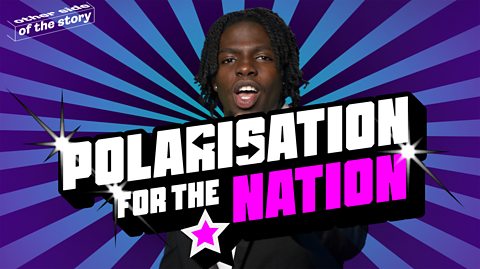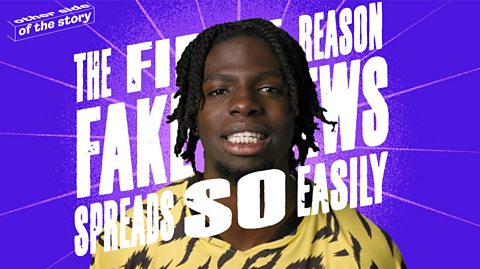Social media is awash with news, consistently flooding our feeds with stories and headlines all battling for our attention.
But with influencers and organisations clashing for our clicks, it’s important that we understand the tactics they use to get them. Check out the short video below to learn about ‘clickbait' and how to spot it online!
How to spot clickbait
Did we grab your attention? Good! They’re all neat little clickbait headlines. Click. Bait. Click – because obviously you’re supposed to click on them. And bait – just like what a fisherman uses to hook his fish. And what’s it trying to hook? Your attention. And do you know what? It works! Because the human mind is always hungry for a new story, always curious. And if we hear a little bit of a story – it makes us crazy!
You know that feeling? You’ve just got to hear the rest. In media terms, that’s called the curiosity gap. There’s a gap between the little bit I’m giving you in the headline and what I’m suggesting you’ll get if you keep on following what I’m saying. Of course it’s not really a new invention, it’s always been used in stories, books and movies. You know the scene you get in a horror movie? Where you get close up to the character face and they’re seeing something awful and you’re thinking “oh my days, what is it?”, then BAM! It cuts into the next scene and then you have to keep on watching right, to find out what’s happening? That is the curiosity gap.
So clickbait is not new, but what is new – is that in the online world, everyone’s trying to grab our attention, all the time. And if you bite on a hook, then you’re being pulled in on a line.
A lot of the time, it might just be adverts or some hype story, but what about the darker side of the internet? Sites where people get into conspiracy theories, or extreme political views based on hate and division. A lot of people who get influenced by that kind of media, didn’t go out looking for it in the first place. They just saw something online that made them really really curious, and then they found themselves getting reeled in.
And then, because of the way that algorithms work, the more you click on something, the more you get of that kind of content, and this can affect how you feel about a news story or issue.
We’re always going to be surrounded by clickbait, and it’s a great thing to be curious, but we only have a certain amount of attention – so the question is, how do you want to choose to spend it? Think about who is behind this headline – what do they want you to feel and what do they want you to do? If someone is dangling bait in front of you, are they really going to feed your curiosity? Or do they just want you on a hook?
So now you’ve learnt all about clickbait, how can you avoid falling hook, line and sinker for it?
Three signs of clickbait
1. Look out for emotion
Headlines that contain language which evokes fear, outrage, anger and other emotions might be indicative of clickbait. This is because headlines will often use emotive language to draw you in.
When you come across an article online, look at the language used in the headline and consider whether it’s actually a matter of interest to you or if you’re just being manipulated into clicking.
Check out this video to learn more about why clickbait headlines use emotional language.
2. Don’t fall into an echo chamber
Algorithms are designed to feed you more of what you’ve liked before. But a diet of just chicken nuggets, fun as it may be, isn’t good for anyone!
Make sure you vary the type of things you read to ensure that algorithms don't end up feeding you clickbait headlines based on what you have liked, shared or read before.
Learn more about echo chambers and how to escape them.
3. The devil's in the (lack of) detail
Another sign that something you're seeing could be clickbait is the use of vague headlines.
Clickbait articles will do this as by using vague, but emotive, headlines, it increases the size of the curiosity gap and makes you more likely to read on, as the headline deprives you of information while still promising something extraordinary.

Not sure if the news you’re seeing on social media is true or false? Can you always tell if the things you see online are real or fake? Learn how to get the other side of the story with our quizzes, videos and explainers.


